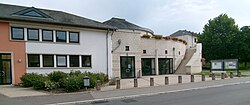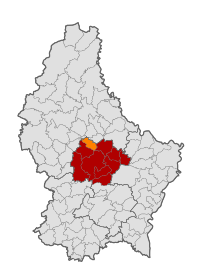The grand ducal family of Luxembourg constitutes the House of Luxembourg-Nassau, headed by the sovereign grand duke, and in which the throne of the grand duchy is hereditary. It consists of heirs and descendants of the House of Nassau-Weilburg, whose sovereign territories passed cognatically from the House of Nassau to the House of Bourbon-Parma, itself a branch of the Spanish royal house which is agnatically a cadet branch of the House of Capet that originated in France, itself a derivative dynasty from the Robertians and the Karlings and the founding house of the Capetian dynasty.

The Grand Duke of Luxembourg is the head of state of Luxembourg. Luxembourg has been a grand duchy since 15 March 1815, when it was created from territory of the former Duchy of Luxembourg. It was in personal union with the United Kingdom of the Netherlands until 1890 under the House of Orange-Nassau. Luxembourg is the world's only sovereign Grand Duchy and since 1815, there have been nine monarchs, including the incumbent, Henri.

Jean was the Grand Duke of Luxembourg from 1964 until his abdication in 2000. He was the first Grand Duke of Luxembourg of French agnatic descent.

Henri is Grand Duke of Luxembourg, reigning since 2000. He is the eldest son of Grand Duke Jean and Princess Joséphine-Charlotte of Belgium, as well as a first cousin of King Philippe of Belgium. In 2019, his net worth was estimated around US$4 billion.

Marie-Adélaïde, was Grand Duchess of Luxembourg from 1912 until her abdication in 1919. She was the first Grand Duchess regnant of Luxembourg, its first female monarch since Duchess Maria Theresa and the first Luxembourgish monarch to be born within the territory since Count John the Blind (1296–1346).
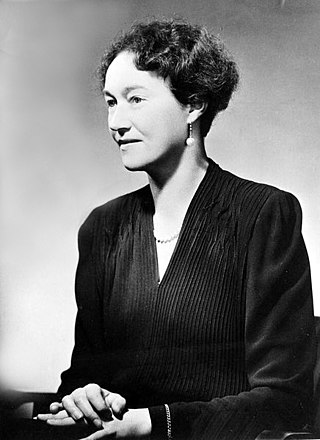
Charlotte was Grand Duchess of Luxembourg from 14 January 1919 until her abdication on 12 November 1964. Her reign is the longest of any Luxembourgish monarch since 1815 when the country was elevated to a Grand Duchy.

Prince Félix of Bourbon-Parma was the husband of Charlotte, Grand Duchess of Luxembourg and the father of her six children, including her successor Jean, Grand Duke of Luxembourg. By birth to his father Robert I, Duke of Parma, he was a member of the House of Bourbon-Parma and one descendant of King Philip V of Spain. Prince Félix was the longest-serving consort of Luxembourg.
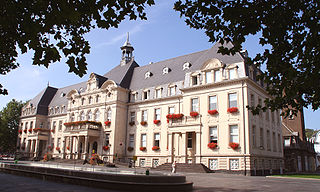
Dudelange is a commune with town status in southern Luxembourg. It is the fourth-most populous commune, with 22,043 inhabitants. Dudelange is situated close to the border with France.
Princess Elisabeth, Duchess of Hohenberg was a Luxembourgish princess. She was a daughter of Grand Duchess Charlotte and her husband, Prince Felix of Bourbon-Parma, the sister of Grand Duke Jean and the aunt of Grand Duke Henri. In 1956 she married Franz, Duke of Hohenberg.

Notre-Dame Cathedral is the Catholic cathedral of the Archdiocese of Luxembourg, located in Luxembourg City in southern Luxembourg. It was originally a Jesuit church, and its cornerstone was laid in 1613. It is the only cathedral in Luxembourg. The church is a noteworthy example of late Gothic architecture; however, it also has many Renaissance elements and adornments.
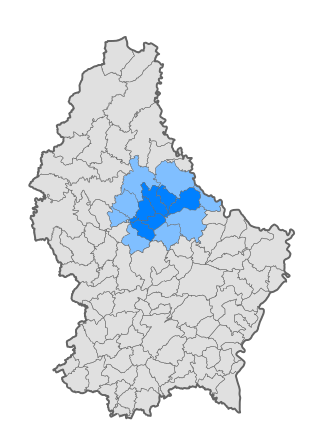
Nordstad is a development area in north-central Luxembourg, and a colloquial term to refer to the combined urban areas in the region. The name is Luxembourgish for 'northern city', but it remains the title, both formal and informal, of the region in any language.
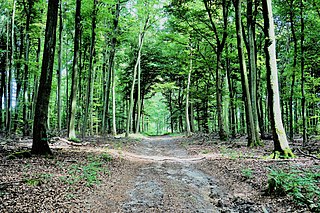
The Grünewald is a forest in central Luxembourg, most of which is owned by the national government. Grünewald stretches through the communes of Niederanven, Steinsel, and Walferdange; the centre of the forest is situated 6 kilometres (3.7 mi) north-east of central Luxembourg City. As a result of its proximity to Luxembourg's capital city, it is a popular destination for tourism, leisure, and hospitality. Within the Grünewald are the sources of the Black Ernz and the White Ernz.
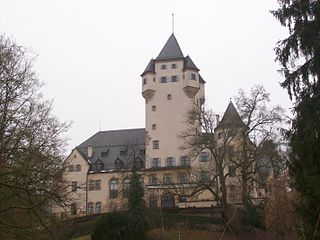
Berg Castle is the principal residence of the Grand Duke of Luxembourg. It is situated in the town of Colmar-Berg, in central Luxembourg, near the confluence of the Alzette and the Attert, two of Luxembourg's most important rivers.

Fischbach Castle is a castle in Luxembourg. It is situated near the town of Fischbach, in central Luxembourg.

The Grand Ducal Palace is a palace in Luxembourg City, in southern Luxembourg. It is the official residence of the grand duke of Luxembourg, and where he performs most of his duties as head of state of the grand duchy, though his principal residence is Berg Castle, in Colmar-Berg.
Betzdorf Castle is a castle in the commune of Betzdorf, in eastern Luxembourg. It is located north-west of Betzdorf village, to the north of the CFL Line 30 railway line.
The Grand Duchess Charlotte Maternity Hospital is a maternity hospital, part of the Centre Hospitalier de Luxembourg in Luxembourg. The hospital is named after Charlotte, Grand Duchess of Luxembourg, who reigned from 1919 to 1964.

Princess Marie-Adélaïde of Luxembourg was a Luxembourgish princess, the third child and the second daughter of Grand Duchess Charlotte (1896–1985) and Prince Felix of Bourbon-Parma (1893–1970).
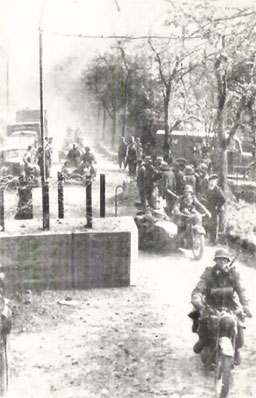
The German invasion of Luxembourg was part of Case Yellow, the German invasion of the Low Countries—Belgium, Luxembourg and the Netherlands—and France during World War II. The battle began on 10 May 1940 and lasted just one day. Facing only light resistance, German troops quickly occupied Luxembourg. The Luxembourgish government, and Grand Duchess Charlotte, managed to escape the country and a government-in-exile was created in London.
Princess Marie-Gabrielle of Luxembourg was a Luxembourgish princess, the third daughter and fourth child of Grand Duchess Charlotte (1896–1985) and Prince Felix of Bourbon-Parma (1893–1970).
